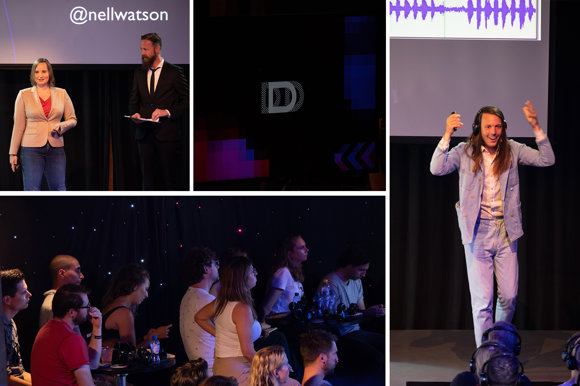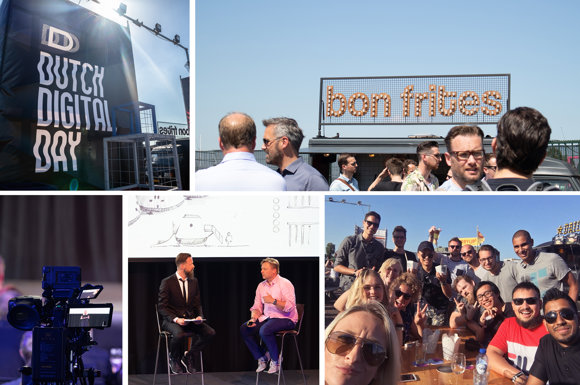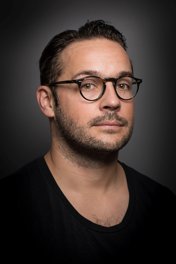The day started with a captivating talk by engineer and entrepreneur Nell Watson. She is fascinated by the impact of the ‘supercomputer’, a chip as small as a grain of salt which costs only 11 cents. We all know that computers are capable of solving complex issues in a more efficient manner than humans are. But now computers are starting to understand the drives, needs and even values of humanity. Because of this change, they are able to find clever ways to make us happier and healthier. This brings huge opportunities for each of our lives and our global society. According to Nell we have just one challenge as humans– to teach values to those ‘supercomputers’ so that they can understand the world like we do. Machine ethics, teaching moral to artificial intelligence machines, is in our hands. Are we ready for this kind of future?

Dutch Digital Day speakers
During DDD, the speakers showed us how computers can do more with less. Thijs van Vuure, biologist, and philosopher, might come across as a stranger in our midst because of his unique point of view. His fascination with birds started at a very young age and enabled him to understand the way birds communicate with each other. Now he can communicate with them.
Birds live faster than we do. 10 times faster to be precise, just like a bird’s heart rate goes 700 beats/m compared to the human 70 beats/m. Such a fast heart rate affects how birds produce their sound. The next logical step is to ask yourself what would happen if you record a bird sound and slow it down 10x? The answer: you get a sound in a more human pace, which you can use to birdify yourself.
Birdi… what?
Thijs figured out a way to communicate with birds and taught us how to recreate the Blue Tit bird sounds. We had to put on headphones, and while Thijs recorded, we karaoke-d the unfamiliar sounds we were hearing through the headphones. After accelerating our recording frequency 10 times, we heard ourselves sing the Blue Tit’s mellow melody. We sounded exactly like birds! Thijs birdified us, as he likes to put it. Want to birdified yourself as well? Good news, Thijs created a birdhouse for humans from where you can communicate with all the birds in the surroundings. #TwittingForReal
No longer 100% human
For a moment we were distracted because of the big bowl of candy in front of us. But all eyes returned quickly back to the stage when Neil Harbisson entered. “Is the thing on his head a reading light? Is it a selfie stick? Is he GoPro-ing himself?” Those were some questions bouncing around in our minds about the antenna attached to his head.

Speaker at Dutch Digital Day
“Becoming technology, instead of using or carrying technology“ is how Neil sees his implemented antenna in his skull. What?! An antenna in his skull? Yes, Neil is colorblind and the antenna enables him to perceive (in)visible colors through audible vibrations in his brain. He hears colors that a normal eye can perceive plus some more frequencies– like ultraviolet and infrared. The antenna is his communication tool: via WIFI he receives images, videos, music or telephone calls into his head. His friends can send him live streams of Australian sunsets, and he hears the melody the sun is making. Not impressed? How about a mp3 recording of your facial soundtrack? Neil can scan your face and email you one.
It was impressive to see how Neil experiments with his own body, adding additional organs and senses that go beyond the limitations of our species. It was such a hilarious and impressive talk to end the day with!

Dutch Digital Day photo gallery
The most powerful key insight of this day was: Efficiency. Something that’s in our DNA, woven into our way of thinking. We always take a step back to ask ourselves “can we do this in a different way that will make it better or faster?” “How can we improve our processes and the way we work together with different disciplines?” Day by day, we try to optimize and improve continuously.
As the speakers indicated during the DDD – if we work more efficiently, we create smarter and more creative solutions. The speakers gave examples of how machines and artificial intelligence can create things we can’t make with our own hands. So let’s use this knowledge to create the most incredible things, in the most efficient and sustainable manner!
